- Home
- Mary Higgins Clark
The Sleeping Beauty Killer Page 2
The Sleeping Beauty Killer Read online
Page 2
Paula could feel Angela beginning to cave. The two of them had always been so close, and Casey was as persuasive as ever. Paula looked to her niece with pleading eyes. Please, she thought, don’t let her make this mistake.
She felt so relieved when Angela tactfully responded, “Why don’t you wait a few days and see how you feel then?”
Casey shook her head, clearly disappointed, but then reached silently for the remote control and turned off the television. “I’m tired,” she said abruptly. “I’m going to bed.”
Paula fell asleep that night praying that the media would move on to something else so Casey could start adapting to a new life. When she woke up in the morning, she realized she should have known that her daughter never waited for anyone’s approval to do anything she believed was important.
Casey’s room was empty. There was a note on the dining room table. Took the train into the city. Be home tonight.
Paula knew that Casey must have walked the mile to the train station. She didn’t need to wonder why Casey had left while she was sleeping. She was going to see the producer of Under Suspicion, no matter what it took.
3
Laurie Moran smiled politely to the waiter and declined another refill on her coffee. She stole a glance at her watch. Two hours. She had been at this table at 21 Club for two full hours. It was one of her favorite restaurants, but she needed to get back to work.
“Mmmm, this soufflé is absolute heaven. You’re sure you don’t want a bite?”
Her companion at what was turning out to be a painfully long meal was a woman named Lydia Harper. By some accounts, she was the brave widow from Houston who’d been raising two boys on her own since a deranged stranger killed their father, an esteemed medical school professor at Baylor, after a road rage incident. By others, she was the manipulative woman who’d hired a hit man to kill her husband because she desperately feared that he was going to divorce her and sue for custody.
The case was perfect for Laurie’s show, Under Suspicion, a series of true crime–based “news specials” focusing on cold cases. It had been two weeks since Lydia agreed on the phone to participate in a reinvestigation of her husband’s murder, but she still hadn’t signed the paperwork. After telling Laurie repeatedly that she “kept meaning to go to the post office,” she suddenly declared two days ago that she wanted to meet in person—in New York, with a first-class airline ticket and two nights at the Ritz-Carlton—before signing on the dotted line.
Laurie had assumed that Lydia was looking for a free five-star trip on the show’s dime, and was willing to oblige if that’s what it took to get her to sign her participation agreement. But each time Laurie tried to broach the issue over lunch, Lydia had changed the subject to the Broadway show she’d seen the previous night, her shopping trip to Barneys that morning, or the excellence of 21’s classic turkey hash she’d ordered from the lunch menu.
Laurie heard her cell phone buzz from the outside pocket of her handbag once again.
“Why don’t you answer it?” Lydia suggested. “I understand. Work work work. It never stops.”
Laurie had ignored several other calls and texts, but was afraid to ignore this one. It might be from her boss.
She felt a pit in her stomach as soon as she saw her phone screen. Four missed calls: two from her assistant, Grace Garcia, and two from her assistant producer, Jerry Klein. She also saw a string of text messages from both of them.
Brett is looking for you. ETA?
OMG. Crazy Casey is here about her case. She says she knows Charlotte Pierce. You’re going to want to talk to her. Call me!
Where are you? Are you still at lunch?
CC is still here. And Brett is still looking for you.
What do you want us to tell Brett? Call ASAP. Brett’s head might explode if you don’t get back soon.
And then a final message from Grace, sent just now: If that man comes back to your office one more time, we might need an ambulance on the 16th floor. What part of “she’s not here” does he not understand?
Laurie rolled her eyes, picturing Brett pacing the hallways. Her boss was a brilliant and renowned producer, but he was impatient and petulant. Last year, a Photoshopped image of his face pasted onto the body of a swaddled baby with a rattle in hand had made the rounds among studio employees. Laurie always suspected that Jerry was the guilty party, but she was confident that he’d covered his electronic tracks so as not to get caught.
The truth was that Laurie had been avoiding Brett. It had been a month since their last special aired, and she knew he was eager for her to start production on the next.
Lord knew she should be thankful. It wasn’t that long ago that Laurie had been losing sleep wondering if she still had a career. First, she’d taken time off from work after her husband, Greg, was killed. Then when she returned, her track record was bumpy at best. With each flop of a show, she heard ambitious, young production assistants—each of them eager to take her place—wondering aloud whether she was “in a funk” or had “lost her touch.”
Under Suspicion had changed all that. Laurie started toying with the idea before Greg died. People loved mysteries, and telling the stories from the perspective of the suspects was a fresh take on cold cases. But after Greg was killed, she sat on the idea for years. In retrospect, she realized she didn’t want to look like a widow obsessed with her husband’s own unsolved murder. But, as they say, necessity is the mother of invention. With her career at stake, she finally pitched what she knew was her best idea. They’d had three successful specials, with ratings and “viral trending” increasing each time. But, as they also say, the reward for good work is more work.
A month ago, Laurie had been convinced that she was well ahead of schedule. She had what she thought was the perfect case. Students from the criminal law clinic at Brooklyn Law School had contacted her about a young woman who was convicted of murdering her college roommate three years earlier. They had proof that one of the prosecution’s key witnesses had lied. It didn’t fit her show’s typical model, which looked at unsolved cases from the perspective of the people who’d lived for years under a cloud of suspicion. But the possibility of freeing a woman who had been wrongly convicted tapped into the sense of justice that had drawn Laurie to journalism in the first place.
She fought like the dickens to get Brett to approve the idea, selling him on the concept of wrongful convictions as a hot narrative trend. Then three days after Brett gave her an enthusiastic green light, the prosecution announced at a joint press conference with the law students that they were so convinced by the new evidence that they had agreed to release the defendant and reopen the case on their own initiative. Justice was served, but Laurie’s show was dead before arrival.
And so Laurie had moved on to her second choice: the murder of Dr. Conrad Harper, whose widow was now seated across from her, almost done with her dessert. “I’m terribly sorry, Lydia, but there’s an urgent matter at my office. I need to get back, but you said you wanted to speak in person about the show.”
Lydia surprised Laurie by setting down her spoon and signaling for the check.
“Laurie, I did want to meet in person,” she said. “I felt it was only fair. I won’t be participating after all.”
“What—”
Lydia held up a palm. “I’ve talked to two different lawyers. They both say I have too much to lose. I’d rather live with the dirty looks from the neighbors than put myself in legal jeopardy.”
“We already talked about that, Lydia. This is your chance to help find out who really killed Conrad. I know you have deep suspicions about his former student.” Her husband had been stalked by a student he’d failed the previous semester.
“And by all means, if you want to investigate him, be my guest. But I won’t be submitting to any interviews.”
Laurie opened her mouth to speak, but Lydia immediately interrupted.
“Please, I know you need to get back to work. There’s nothing you can say to change my mind. My decision is final. I just felt that I should tell you the news in person.”
At that exact moment, the waiter arrived with the check, which Lydia promptly handed to Laurie. “It was very nice to have crossed paths with you, Laurie. I wish you all the best.”
Laurie felt a chill run up her spine as Lydia rose from the table and left her there, alone. She did it, Laurie thought, and no one will ever be able to prove it.
• • •
As she waited for the server to return with her credit card, Laurie sent a joint text message to Grace and Jerry: Tell Brett I’m ten minutes away.
What was she going to say once she got there? Her murdered-professor case was down the drain.
She was about to hit enter when she remembered Jerry’s earlier text about Crazy Casey. Was it possible? She revised her message. Did Casey Carter really ask to see me?
Grace immediately responded. YES! She’s in conference room A. A convicted killer is in our building! I nearly called 911.
As a journalist, Laurie had interviewed several people accused and even convicted of murder. Grace, however, still flinched at the thought. Jerry’s response arrived immediately after Grace’s. I was worried she’d leave but when I thanked her for waiting, she said we wouldn’t be able to get rid of her until she saw you!
Laurie found herself smiling as she signed the bill for lunch. Lydia Harper’s pulling out of the show may have been a blessing in disguise. Casey’s release had been the lead story on every network last night, and now she was asking for Laurie. She typed a new message from the cab. Buy me as much time as possible with Brett. Tell him I have a lead on a promising new case. I want to talk to Casey first.
4
When Laurie exited the elevator on the sixteenth floor of the Fisher Blake Studios offices in Rockefeller Center, she headed directly to the conference room. Grace had managed to learn from Brett’s secretary, Dana, that Brett would be on a conference call for the next fifteen or twenty minutes, but that he’d be continuing his hunt for Laurie once he was finished.
She was wondering why Brett was so eager to speak to her. She knew he was pushing her to lock down her next case, but that was nothing new. Was it possible he had somehow figured out in advance that the professor’s widow was going to cancel on her? She shook off the thought. Her boss might want people to think he was clairvoyant, but he wasn’t.
The woman waiting for her in the conference room sprang to her feet when Laurie opened the door. Laurie recognized Katherine “Casey” Carter immediately. Laurie was just out of college, beginning her journalism career, when the Sleeping Beauty case hit the headlines. The start of her “career” meant fetching coffee in the newsroom of a regional paper in Pennsylvania, but at the time, Laurie was in heaven, soaking up every ounce of training.
As an aspiring journalist, she’d been riveted by the trial. When she’d heard the news last night of Casey’s release, Laurie couldn’t believe it had been fifteen years already. Time flew so fast, though probably not for Casey.
When her trial had occupied the headlines, Casey had been absolutely stunning, with long, shiny dark brown hair, alabaster skin, and almond-shaped blue eyes that sparkled as if she was thinking of a joke. Right out of college, she had landed a coveted job as an assistant in the contemporary art department at Sotheby’s. She was pursuing a master’s degree and dreamt of having her own gallery when she met Hunter Raleigh III at an art auction. It wasn’t just because of her fiancé’s prominence that the nation had been riveted by the case. Casey was captivating in her own right.
Even after fifteen years, she was still beautiful. Her hair was shorter now, bobbed at the shoulders like Laurie’s own style. She was thinner, but looked strong. And her eyes still sparked with intelligence as she shook Laurie’s hand firmly.
“Ms. Moran, thank you so much for seeing me. I’m sorry I didn’t call for an appointment, but I imagine you get flooded by requests.”
“True,” Laurie said, gesturing that they should both take a seat at the conference table. “But not from people with names as well known as yours.”
Casey let out a sad laugh. “And which name are we talking about? Crazy Casey? The Sleeping Beauty Killer? That’s why I’m here. I’m innocent. I did not kill Hunter, and I want my name—my good name—back.”
• • •
For those who weren’t on a first-name basis with him, Hunter was Hunter Raleigh III. His grandfather, Hunter the first, had been a senator. Both of Hunter the first’s sons, Hunter Junior and James, joined the military after graduating from Harvard. After Hunter Junior was an early casualty of the Vietnam War, his younger brother, James, committed himself to a lifelong army career, and named his first-born son Hunter the Third. James ascended to the level of a three-star general. Even in retirement, he continued to serve as an ambassador. The Raleighs were a smaller version of the Kennedys, a political dynasty.
And then Casey killed the heir to the throne.
At first, the papers called Casey the Sleeping Beauty. She claimed to have been sleeping soundly while an unknown person or persons broke into her fiancé’s country house and shot him to death. The couple had attended a gala for the Raleigh family’s foundation in the city that night, but left early after Casey said she felt sick. According to her, she fell asleep in the car and did not even remember arriving at Hunter’s house. She woke up hours later on the living room sofa, wandered into the bedroom, and found him covered in blood. She was a young, beautiful up-and-comer in the art world. Hunter was a beloved member of a treasured American political family. It was the kind of tragedy that captivated the nation.
And then, within a few news cycles, the police arrested poor Sleeping Beauty. The prosecution’s case was strong. The papers started calling her the Sleeping Beauty Killer and, eventually, Crazy Casey. According to most theories, she’d flown into a drunken, jealous rage when Hunter broke off the engagement.
Now she was in a conference room with Laurie, claiming still—after all these years—to be innocent.
• • •
Laurie was aware of the seconds ticking away before she’d need to speak to her boss. Normally, she would have wanted to walk methodically through Casey’s side of the story, but she needed to cut to the chase.
“I’m sorry to be blunt, Casey, but the evidence against you would be hard to set aside.”
Even though Casey denied ever having fired the handgun that was determined to be the murder weapon, her fingerprints were found on the gun. And her hands tested positive for the presence of gunshot residue. Laurie asked her if she was denying those facts.
“I assume the tests were done correctly, but all that means is that the real killer pressed my hand to the weapon and let off a shot. Think about it: Why would I have said I never fired the gun if I had shot Hunter with it? I could have easily explained my prints by saying I fired it at the range. Not to mention, whoever shot Hunter apparently missed twice, based on the bullet holes found at the house. I was a very good shot. If I had wanted to kill someone—which I never would—trust me, I would not have missed. And if I had fired his gun, why would I consent to GSR, gunshot residue, testing?”
“What about the drugs the police found in your purse?”
Casey described her illness that night as so severe that the police had tested her blood for intoxicants. But by the time the results confirmed that she had both alcohol and a type of sedative in her system, a search of Hunter’s home had turned up that very same drug in Casey’s own evening bag.
“Again, if I went through all the trouble of drugging myself, why would I keep three extra Rohypnol tablets in my own purse? It was one thing to accuse me of being a murderer, but I never thought anyone would believe I’d be that stupid.”
Laurie was aware of Rohypnol, a drug commonly used in date rapes.
> So far, what Casey was saying was all a rehash of the arguments that her lawyer tried to raise at the trial. She was claiming that someone drugged her at the gala, went back to Hunter’s house, shot him, and then framed her while she was sleeping. The jury hadn’t bought it.
“I followed your trial at the time,” Laurie said. “Forgive me for saying this, but I think one of the problems was that your lawyer never seemed to suggest a concrete alternative explanation. She hinted that police may have planted evidence, but never really explained a motive for them to do so. And most importantly, she never gave the jury an alternative suspect. So tell me, Casey: If you didn’t kill Hunter, who did?”
5
“I’ve had a long time to think about who might have killed Hunter,” Casey said as she handed Laurie a sheet of paper with five names on it. “I don’t think it was a random break-in or failed robbery while I was knocked out on the couch.”
“I wouldn’t have thought so either,” Laurie agreed.
“But when I found out there was a sedative in my system, I realized that whoever killed Hunter must have been at Cipriani for the Raleigh Foundation gala that night. I felt fine earlier in the day. It wasn’t until an hour or so into the event that I began to feel sick. Someone must have slipped the drug into my drink when I wasn’t looking, which means they had to have access. I can’t imagine anyone wanting to hurt Hunter, but I know it wasn’t me. These people all arguably had motive and opportunity.”
Laurie recognized three of the five names, but they were all a surprise to her as possible suspects. “Jason Gardner and Gabrielle Lawson were at the gala?”
Jason Gardner was Casey’s ex-boyfriend and the author of a tell-all memoir that ingrained the nickname Crazy Casey into the cultural lexicon. Laurie couldn’t recall all the details about Gabrielle Lawson’s connection, but the woman was one of the city’s famed socialites. As Laurie recalled, there was tabloid chatter that Hunter was purportedly still interested in her, despite his engagement to Casey. Laurie hadn’t realized that either Jason or Gabrielle had been at Cipriani the night of the murder.

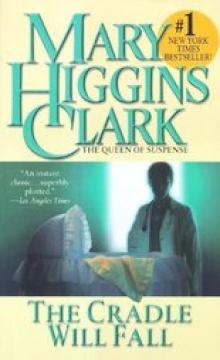 Clark, Mary Higgins 03 - The Cradle Will Fall
Clark, Mary Higgins 03 - The Cradle Will Fall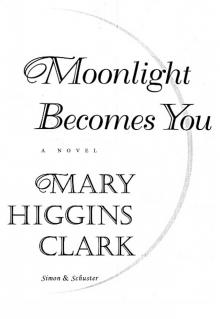 Moonlight Becomes You
Moonlight Becomes You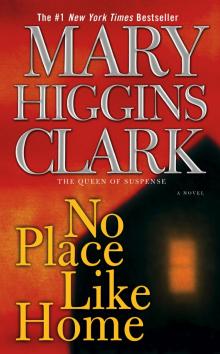 No Place Like Home
No Place Like Home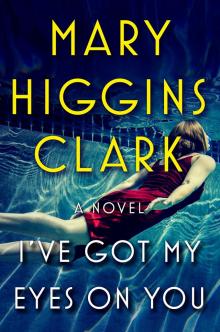 I've Got My Eyes on You
I've Got My Eyes on You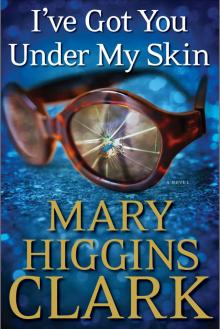 I've Got You Under My Skin
I've Got You Under My Skin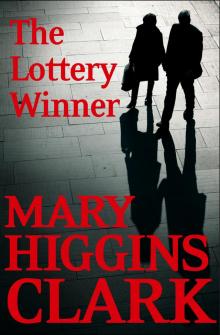 The Lottery Winner
The Lottery Winner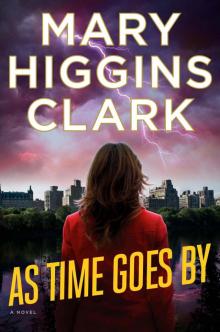 As Time Goes By
As Time Goes By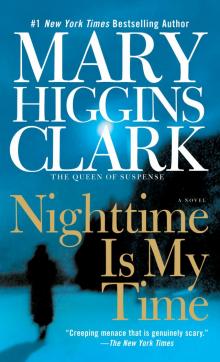 Nighttime Is My Time
Nighttime Is My Time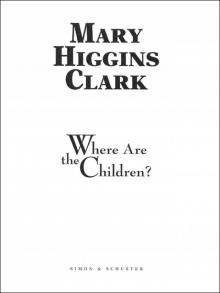 Where Are the Children?
Where Are the Children?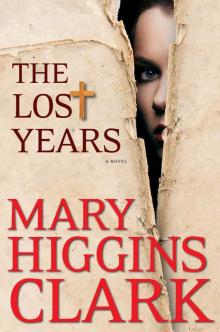 The Lost Years
The Lost Years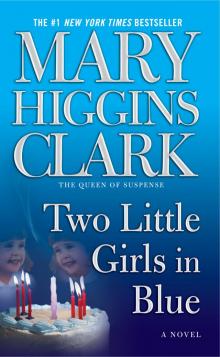 Two Little Girls in Blue
Two Little Girls in Blue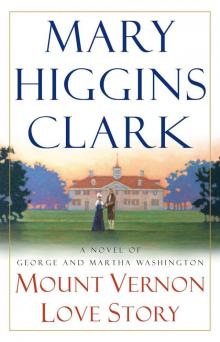 Mount Vernon Love Story: A Novel of George and Martha Washington
Mount Vernon Love Story: A Novel of George and Martha Washington All by Myself, Alone
All by Myself, Alone The Melody Lingers On
The Melody Lingers On Just Take My Heart
Just Take My Heart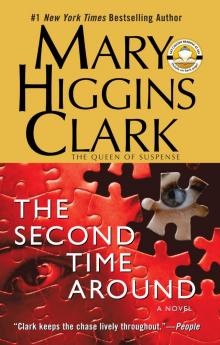 The Second Time Around
The Second Time Around A Cry in the Night
A Cry in the Night Deck the Halls
Deck the Halls We'll Meet Again
We'll Meet Again Before I Say Goodbye
Before I Say Goodbye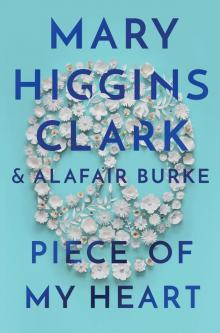 Piece of My Heart
Piece of My Heart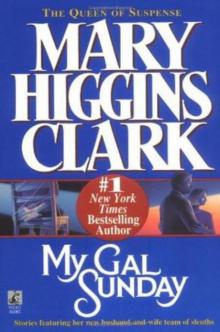 My Gal Sunday
My Gal Sunday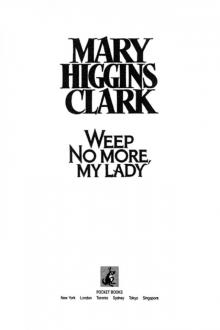 Weep No More, My Lady
Weep No More, My Lady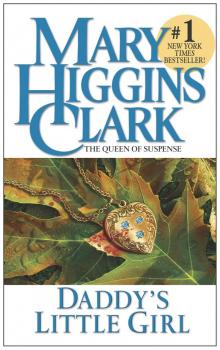 Daddy's Little Girl
Daddy's Little Girl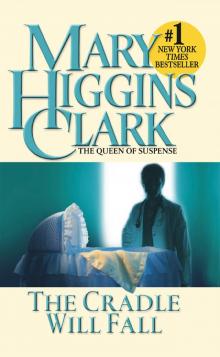 The Cradle Will Fall
The Cradle Will Fall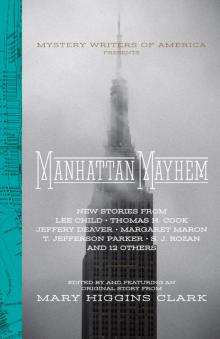 Manhattan Mayhem: New Crime Stories From Mystery Writers of America
Manhattan Mayhem: New Crime Stories From Mystery Writers of America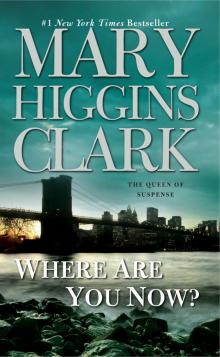 Where Are You Now?
Where Are You Now?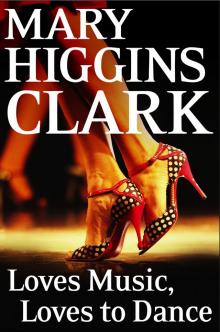 Loves Music, Loves to Dance
Loves Music, Loves to Dance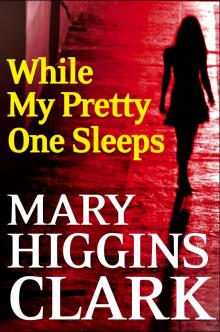 While My Pretty One Sleeps
While My Pretty One Sleeps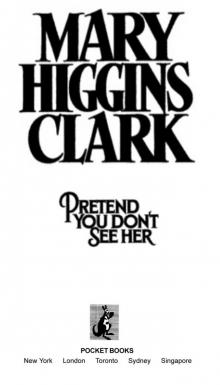 Pretend You Don't See Her
Pretend You Don't See Her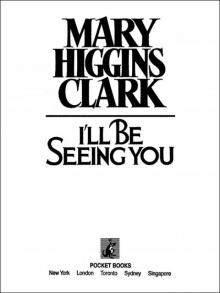 I'll Be Seeing You
I'll Be Seeing You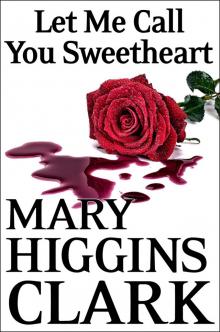 Let Me Call You Sweetheart
Let Me Call You Sweetheart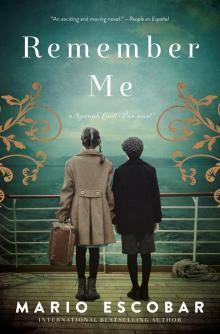 Remember Me
Remember Me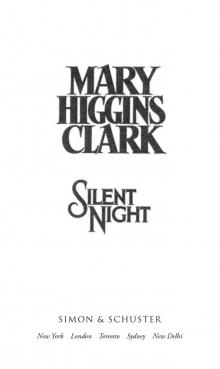 Silent Night
Silent Night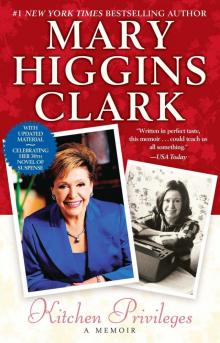 Kitchen Privileges
Kitchen Privileges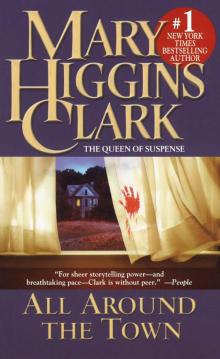 All Around the Town
All Around the Town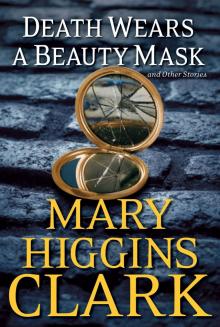 Death Wears a Beauty Mask and Other Stories
Death Wears a Beauty Mask and Other Stories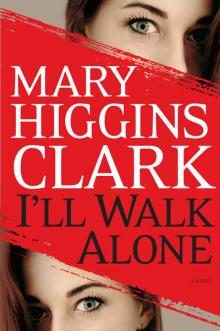 I'll Walk Alone
I'll Walk Alone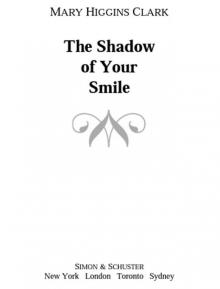 The Shadow of Your Smile
The Shadow of Your Smile Kiss the Girls and Make Them Cry
Kiss the Girls and Make Them Cry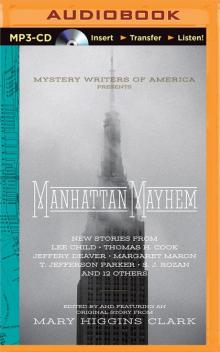 Manhattan Mayhem
Manhattan Mayhem Deck the Halls (Holiday Classics)
Deck the Halls (Holiday Classics)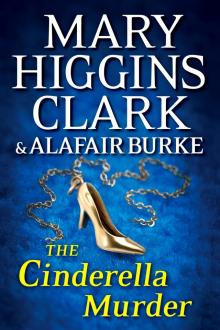 The Cinderella Murder
The Cinderella Murder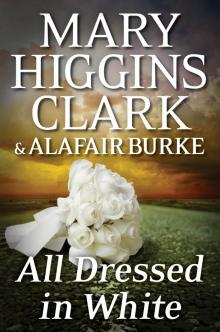 All Dressed in White
All Dressed in White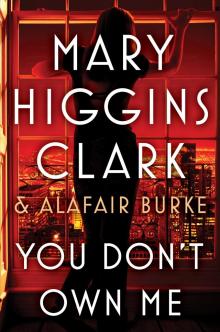 You Don't Own Me
You Don't Own Me The Christmas Thief
The Christmas Thief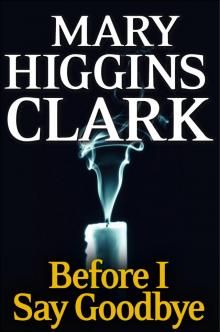 Before I Say Good-Bye
Before I Say Good-Bye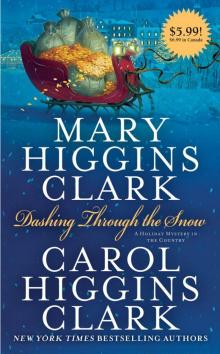 Dashing Through the Snow
Dashing Through the Snow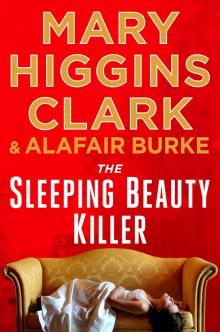 The Sleeping Beauty Killer
The Sleeping Beauty Killer Mount Vernon Love Story
Mount Vernon Love Story Santa Cruise
Santa Cruise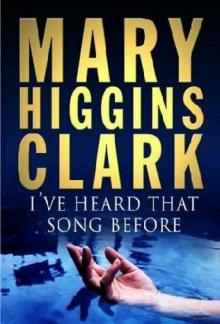 I 've Heard That Song Before
I 've Heard That Song Before